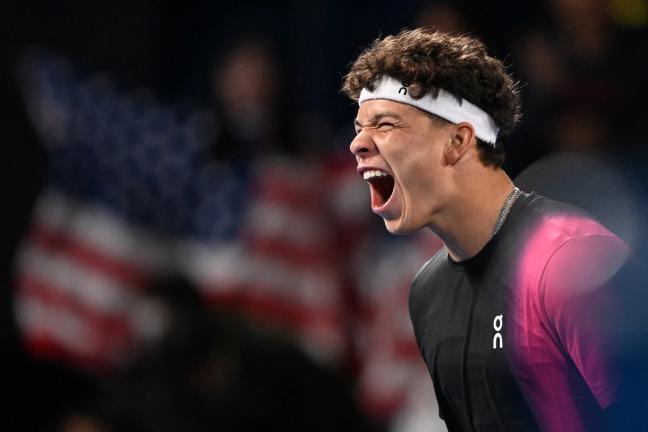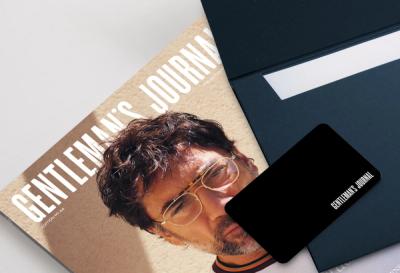
What’s going on at Nike?
Words: Josh Lee
Nike, at least since the Reagan years – the period in which Michael Jordan’s fame jumped into hyperspeed as he became the face of his own sneaker line with the Oregon company – has been one of the most irresistible names on Earth, a venture securely affixed to the Mount Rushmore of innovation alongside Apple in the Jony Ive years and Facebook before all the court proceedings. For decades, it endorsed – and effectively became synonymous with – those who moved the needle in their sports (Tiger Woods, Serena Williams, LeBron, Roger and Rafa, both Ronaldos), and sponsored history’s greatest teams (Sir Alex Ferguson’s Manchester United, Arsenal’s Invincibles, a slew of rugby nations, and the entirety of the NFL since 2012). Stretching across the generations, it seemed to be the only sports brand that could dream up envelope-pushing innovations: light-as-a-feather flyknit constructions that softly encased the foot and ankle, marathon trainers for smashing world records, clothing that upcycled waste materials.

Image: Getty

Image: Getty
For many, it was Nike and then the rest. Adidas was always a reliable brand, but a little too stiff – more strait-laced A-grade student than rebel athlete (Leo Messi, the golden boy of Argentina, wears the 3 Stripes; John McEnroe, the on-court maverick, laced up the Tick). Reebok was left behind in the 1980s, along with Spandex, the New Romantics and the Walkman. Diadora was bought for schoolkids whose mums didn’t care so much for them. Lotto was bargain bin.
Beyond the courts, arenas and fields, Nike became deeply rooted in the universe of streetwear, a phenomenon that fanned out from Spike Lee’s Do the Right Thing to the blocks of the Bronx, Salt Lake City and Los Angeles, skaters showcasing their SB sneakers on grungy London ramps, and the everyday urban dad in his pair of Cortezs. There have been tomes and books and documentaries on its glorious winning streak and unstoppable past, and the storytelling has been too good to circumvent – ‘Girls from Compton don’t play tennis. They own it,’ read one tagline on a 2018 poster of Serena Williams.
Yet, recent times have seen the business caught up by the pack. On is one of the biggest challengers of late. Its mix of universally appealing colours – muted, block shades, such as dusty ruby, olive green, navy, white and black, with the odd pop of tie-dye schemes – and pared-down stylings have suddenly scooped the approval of middle-aged gymgoers, ladies of leisure who have a certain predilection for Gail’s Bakery, and tennis heroes Ben Shelton and Iga Świątek. “I love that I have partnered with a company that has years of experience and is looking to take over a new sport like tennis,” says Shelton, who’s billed as one of tennis’s rising stars. Big rival Adidas has also been acknowledged for its retro-style drops and its coveted collaborations with zeitgeisty names such as Gucci, all while hipster circles have rushed to its Sambas and Spezials. Smaller alternatives, too – Boston-based Tracksmith, which focuses on the amateur running community, comes to mind – have started to whittle out their own niches.

Ben Shelton. Image: Getty
By contrast, it was reported late last year that a key goal for Nike is to save $2bn by 2027, due to a poor sales run. As such, the company’s workforce has seen a fair amount of trimming this year, beginning in February, with approximately two per cent of staff across the globe to be laid off altogether. “To compete, we must edit, shift and divest less critical work to create greater focus and capacity for what matters most,” said CEO John Donahoe in an internal memo.
There’ve also been notable departures from Nike’s stable of athletes. In January, its partnership with Tiger Woods – a lucrative 27-year union in which both parties mutually raised the other’s profile to stratospheric heights – came to a conclusion. Woods’s current appeal, of course, is far from that of his late-Noughties peak, so the cutting of ties makes marketing and financial sense, but the loss is further underlined as current stars – Bayern Munich striker Harry Kane and Manchester City’s Jack Grealish – have jumped for other brands.

Image: Getty
Adding further weight to the nosedive are a number of hiccups, with the unveiling of Nike’s track-and-field Olympics kits for Team USA high among them. The women’s uniform, which features a revealing, high-cut leotard, was billed by many as sexist. There was also the issue of remixing the colours of the Saint George’s cross on the most recent England football kit – a move met with resistance from social-media users, and high-profile figures, such as former prime minister Rishi Sunak – and last summer saw a contentious flash point around the refusal to sell replica shirts of Lionesses goalkeeper Mary Earps. (The decision was eventually reversed, with the shirt selling out within minutes.)
There’s also the perception that Nike, in a course of action some have attributed to Donahoe, has largely played it safe since the chief exec’s arrival, in 2020. Seemingly, there has been more focus on the usual, mainstream-appeasing offerings (Air Force 1s, Dunks, et al., which, though inarguably evergreen, can feel a bit monotonous at times) and less emphasis on performance and technology, with flyknit – the material that drew a cult following for its lightweight strands that created one-piece uppers – being shouted about far, far less.
Though still a key touchstone in the world of sports and culture, this unfavourable combination – a jettisoning of heroes, a few clangers and a reliance on safe footwear winners – feels like a bit of a flatlining for a brand that was once the torchbearer for the cutting edge. With this summer tightly packed with huge sporting events, Nike has found many opportunities to show that it’s still very much alive – but will it be enough to help jumpstart a period of frenzied enthusiasm it once knew?
For Donahoe – and for fans of the Swoosh – an uptick in fortune can’t come soon enough.
This feature was taken from our Summer 2024 issue. Read more about it here.
Want more sports content? This is how tennis became more stylish than football, rugby and the rest…

Become a Gentleman’s Journal Member?
Like the Gentleman’s Journal? Why not join the Clubhouse, a special kind of private club where members receive offers and experiences from hand-picked, premium brands. You will also receive invites to exclusive events, the quarterly print magazine delivered directly to your door and your own membership card.
